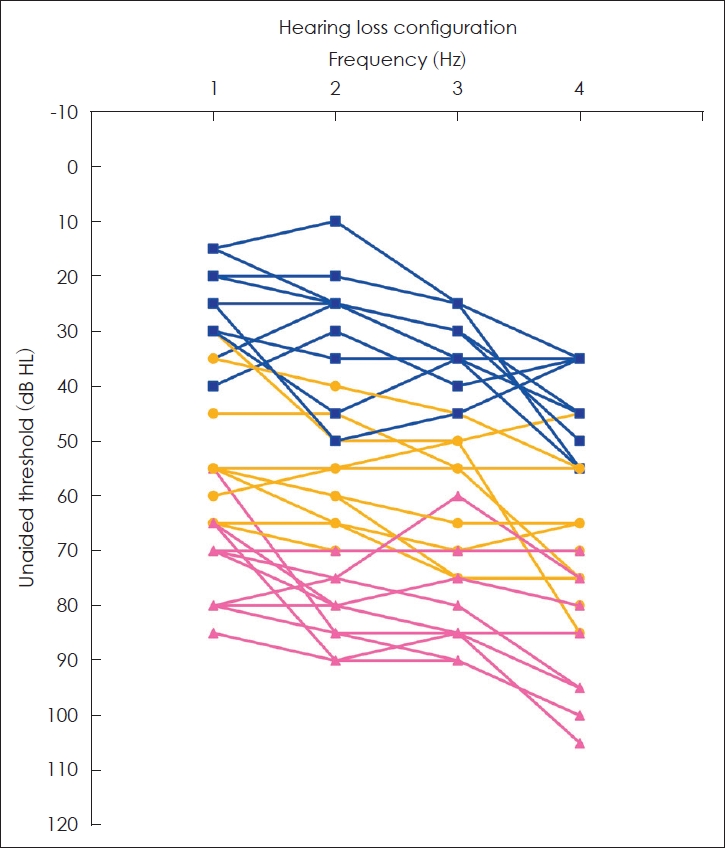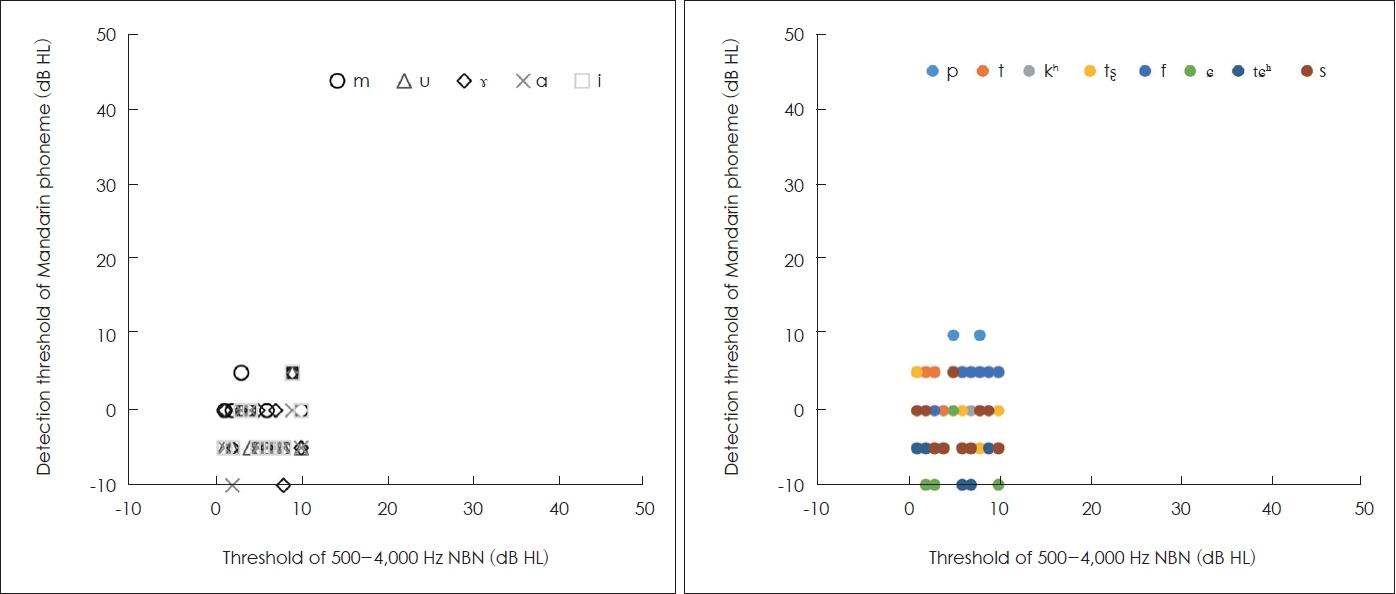1. Anderson KL, Smaldino JJ. Children’s home inventory for listening difficulties (CHILD). Ed Audiol Rev 2000;17:3
2. Grimshaw SK. Assessing hearing-impaired children’s listening and processing abilities: a questionnaire and cognitive approach [dissertation]. Nottingham: Nottingham Univ.;1998.
3. Ling D. The ling six-sound test. editor. Auditory-verbal therapy and Practice. In: Estabrooks W. Washington, DC: AG Bell;2002. p.307–10.
4. Hung YC, Tsai YC, Lin CY. An acoustic-phonetic approach to the development of a Chinese-oriented speech hearing test. In: Proceedings of the ASHA 2013 Annual Convention; 2013 Nov 14-16; Chicago: ASHA. 2013.
5. Dillon H. Hearing aids. London: Hodder Arnold;2008.
6. Frye GJ. Understanding the ANSI standard as a tool for assessing hearing instrument functionality. Hear Rev 2005;12:22, 24-27, 79.
7. Valente M, Bentler R, Kaplan HS, Seewald R, Trine T, Van Vliet D, et al. Guidelines for hearing aid fitting for adults. Am J Audiol 1998;7:5–13.


8. Mueller HG. Probe-mic assessment of digital hearing aids? Yes, you can! Hear J 2001;54:10–2.

9. Valente M, Abrams H, Benson D, Chisolm T, Citron D, Hampton D, et al. Audiologic management of adult hearing impairment. Audiology Today 2006;18:32–6.
10. Kirkwood DH. Survey: dispensers fitted more hearing aids in 2005 at higher prices. Hear J 2006;59:40
11. Bagatto MP, Scollie SD, Seewald RC, Moodie KS, Hoover BM. Realear-to-coupler difference predictions as a function of age for two coupling procedures. J Am Acad Audiol 2002;13:407–15.


12. Humes LE, Kirn EU. The reliability of functional gain. J Speech Hear Disord 1990;55:193–7.


13. Rines D, Stelmachowicz PG, Gorga MP. An alternate method for determining functional gain of hearing aids. J Speech Hear Res 1984;27:627–33.


14. McCreery R. Building blocks: the trouble with functional gain in verifying pediatric hearing aids. Hear J 2013;66:14–6.
15. Madell JR, Flexer CA. Pediatric audiology: diagnosis, technology, and management. 2nd ed. New York: Thieme;2008. p.1–329.
16. Stephens MM, Rintelmann WF. The influence of audiometric configuration on pure-tone, warble-tone and narrow-band noise thresholds of adults with sensorineural hearing losses. J Am Audiol Soc 1978;3:221–6.

17. Northern JL, Downs MP. Behavioral hearing testing of children. editors. Hearing in Children. In: Northern JL, Downs MP. Baltimore: Williams & Wilkins;1991. p.4
18. Scollie S, Glista D, Tenhaaf J, Dunn A, Malandrino A, Keene K, et al. Stimuli and normative data for detection of ling-6 sounds in hearing level. Am J Audiol 2012;21:232–41.


19. Glista D, Scollie S, Moodie S, Easwar V.; Network of Pediatric Audiologists of Canada. The ling 6(HL) test: typical pediatric performance data and clinical use evaluation. J Am Acad Audiol 2014;25:1008–21.


21. Hung YC, Lin CY, Tsai LC, Lee YJ. Multidimensional approach to the development of a Mandarin Chinese-oriented sound test. J Speech Lang Hear Res 2016;59:349–58.


22. Hung YC, Lee YJ, Tsai LC. Validation of the Chinese sound test: auditory performance of hearing aid users. Am J Audiol 2018;27:37–44.


23. Agung K, Purdy SC, Kitamura C. The ling sound test revisited. Aust New Zeal J Audiol 2005;27:33–41.

25. Hughson W, Westlake H. Manual for program outline for rehabilitation of aural casualties both military and civilian. Trans Am Acad Ophthalmol Otolaryngol 1944;48:1–15.
26. Erber NP. Auditory training. Washington, DC: Alexander Graham Bell Association for the Deaf;1982.
27. Davidson LS, Skinner MW. Audibility and speech perception of children using wide dynamic range compression hearing AIDS. Am J Audiol 2006;15:141–53.


28. Pavlovic CV, Studebaker GA, Sherbecoe RL. An articulation index based procedure for predicting the speech recognition performance of hearing-impaired individuals. J Acoust Soc Am 1986;80:50–7.


30. Clark J, Yallop C, Fletcher J. An introduction to phonetics and phonology. Oxford: Wiley-Blackwell;2007.













